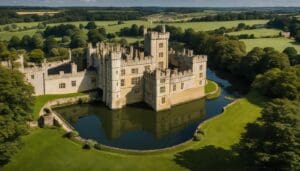Your Travel Guide To Buenos Aires: The South American Paris
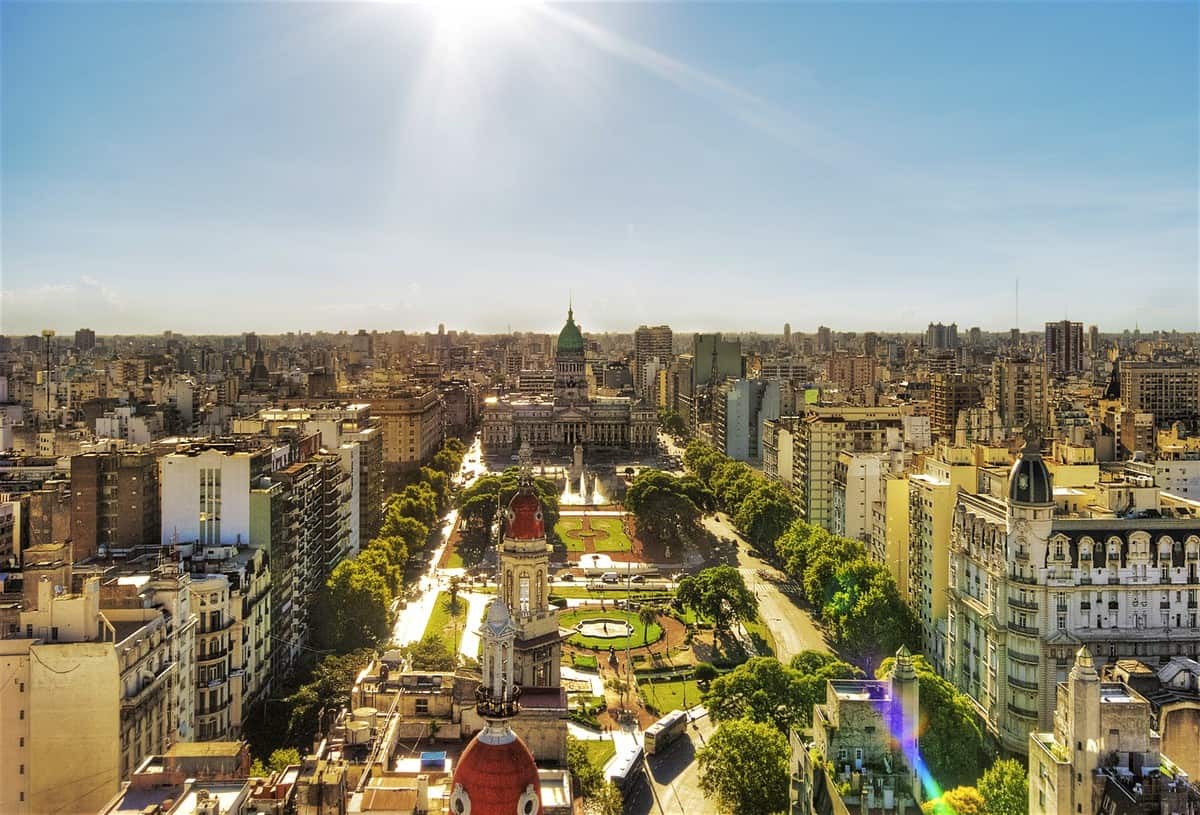
Updated On: April 22, 2024 by Esraa Mahmoud
Port City, the South American Paris, the City of Good Winds…. The capital of Argentina, Buenos Aires, has many names and faces. Here, modern skyscrapers rub shoulders with slums, business districts with luxurious parks, and tango and football can even be found on the subway! Buenos Aires is a city of immigrants and revolutions, cultural masterpieces, and delicious food; this is a city that will enchant you with its sights and take you into its fascinating world of entertainment.
Buenos Aires is a huge city and a vibrant microcosm that attracts locals and tourists alike. There are now 13 million people living in the metropolis, which was founded in 1535 and is considered one of the most important cities on the continent and, of course, the political and cultural center of Argentina.
We are not exaggerating when we say that the capital of Argentina is one of the most beautiful cities in South America, if not the whole world. The old part of the city with its colonial architecture resembles Paris, London, and Madrid at the same time, while the new districts resemble modern cities with high-rise buildings and skyscrapers.
Over the years, the word “Buenos Aires” became a synonym for images of tango squares, colored building facades, and a vast metallic flower. Pleasantly, it all turned out to be true! What are the best places to visit in Buenos Aires and the best things to do? Let’s find out!
Visit Plaza de Mayo
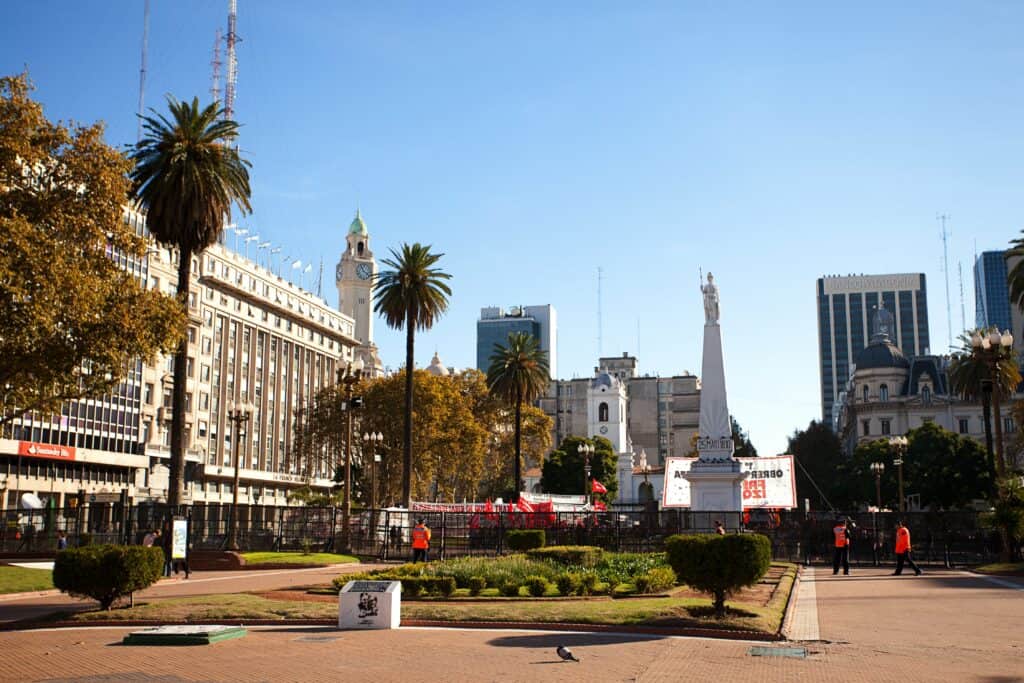
The most significant square and at the same time a famous sight in the Argentine capital is the Plaza de Mayo. This symbolic place is of great significance to the history of Buenos Aires and all of Argentina. The Plaza de Mayo is the site that witnessed many crucial events in the history of Argentina.
The square is where the Revolution of May 25, 1810, took place and which led to the creation of a local government. A first step towards the independence of the country. Plaza de Mayo is also the place where, in 1580, Juan de Garay founded the city for the second time under the name Ciudad de la Santàsima Trinidad y Puerto de Santa Maria del Buen Ayre (City of the Most Holy Trinity and Port of Saint Mary of the Good Airs).
The Plaza de Mayo is lined with some of the most important historical and governmental buildings in Argentina, such as the Metropolitan Cathedral, the Casa Rosada, the seat of the national government, and the Cabildo, the Argentine bank.
But the Plaza de Mayo also houses the Pyramid of Mayo in memory of the independence revolutionaries and the equestrian monument dedicated to General Manuel Belgrano, creator of the Argentine flag. Strolling through this square that was the scene of great revolutions will take you into the spirit of Argentina itself, which lives in the present without ever forgetting its past.
Casa Rosada
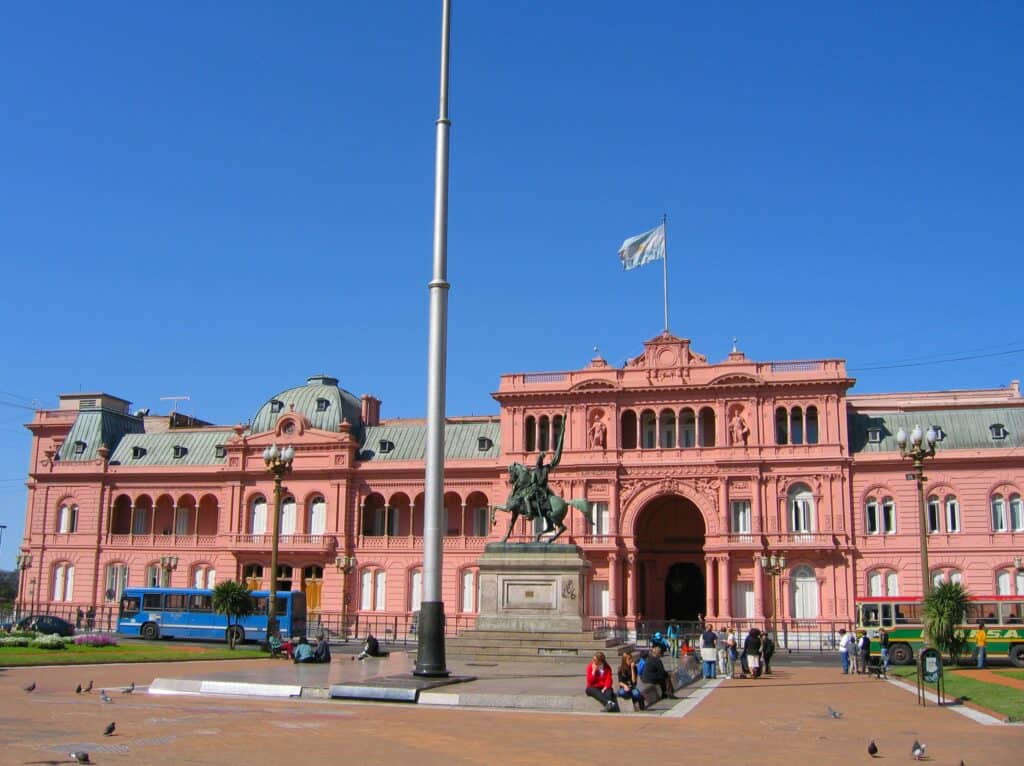
Some buildings go beyond their primary function to become symbols of their city; the Casa Rosada in Buenos Aires is one of them. Taking up the entire east side of the Plaza de Mayo, the unique pink facade of the Casa Rosada (Pink House) houses the presidential palace that was painted in this color during the presidency of Domingo Sarmiento.
The pink color of the Casa Rosada, which lights up at sunset, may be due to President Sarmiento’s desire to bring peace during his term in office from 1868 to 1874. Another, more likely theory is that the color of the palace comes from a combination of lime paint with ox blood. This practice that was very common in Argentina during the 19th century.
Built in 1594 by the governor of Buenos Aires, the palace was first used as a royal fortress by Don Juan Baltazar of Austria with a drawbridge. After a reconstruction in 1713, it was used as the seat of the city’s governors and later by the rulers before hosting the independent governments in 1810. Around 1820, President Bernadino Rivadavia had a porch created to replace the drawbridge.
The Casa Rosada has housed the Museo de la Casa de Gobierno, which exhibits objects and portraits of presidents since 1957. But for many, the Casa Rosada is the building whose balcony immortalized Eva “Evita” Peron, with her arms raised and seen in many vintage photos and movies. This is one of those places that will just leave you in awe!
Cabildo Nacional
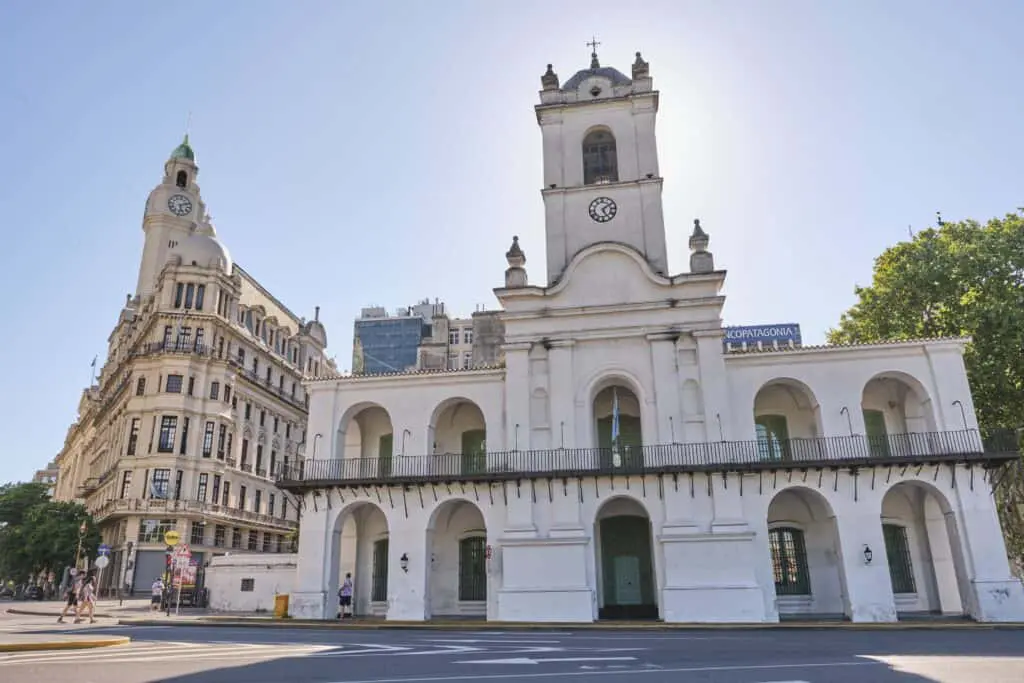
Argentina was a colony for a long time and was part of the Spanish Empire. Many buildings were built during that time, and in Buenos Aires, one of them is the Ayuntamiento, called the Cabildo Nacional, a seat where the municipality was governed.
This neat building is also located on Plaza de Mayo. Today, the white colonial building houses a museum, the National Museum of the Cabildo and the Mayan Revolution, dedicated mainly to the May Revolution of 1810, which greatly influenced the country. The Cabildo was generally renovated and partially reconstructed in the 1940s, and inside its pretty courtyard, you will see a well-preserved 19th-century fountain.
The National Museum of the Cabildo and the Mayan Revolution (Museo Nacional del Cabildo y la Revolución de Mayo) is home to paintings, documents, and testimonies of the 1810 revolutionary period that took place in the Plaza De Mayo, just next door. The Cabildo Nacional is definitely worth the visit!
La Catedral Metropolitana de Buenos Aires
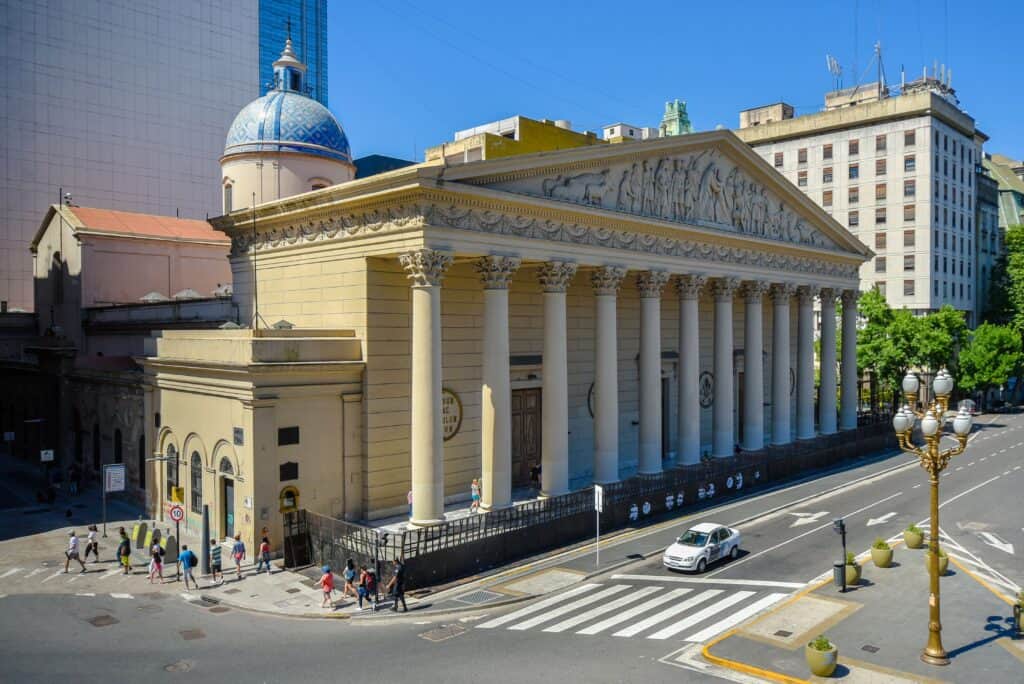
The La Catedral Metropolitana de Buenos Aires is also located on Plaza Mayo, at the intersection of San Martín and Rivadavia streets, and can be visited during the visit of Casa Rosada.
The Metropolitan Cathedral building is imposing; its architecture with the many columns almost seems a little Roman or even Greek. The first church building on this site dates back to the 16th century, but since then, the cathedral has been rebuilt and expanded a few times, partly because the structures collapsed several times.
Inside, the Metropolitan Cathedral has a floor decorated with Venetian mosaics, confessionals from the Jesuit missions, and a wooden crucifix made by Manuel de Coyto in 1671, entitled “Santo Cristo de los Buenos Aires.”
Among other things, the cathedral houses the tomb of the national hero San Martín. It is thanks to him that Argentina gained its independence from Spain in 1816. Today his tomb, which is permanently guarded by two soldiers, is visited by tourists from Argentina and abroad. With a bit of luck, you can experience the changing of the guard in the cathedral in the morning.
Walk Through the Avenida 9 de Julio
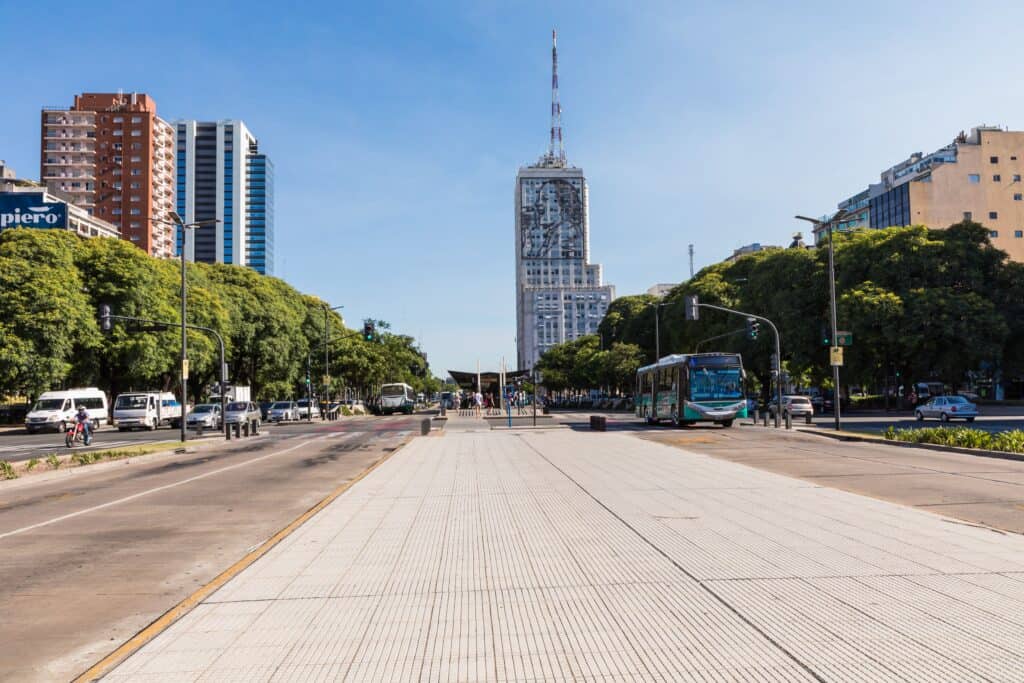
It may look like a California highway in the middle of downtown, but in reality, it’s just the well-known long Avenida 9 de Julio. Avenida 9 de Julio is one of the most famous streets in Buenos Aires and, of course, a main artery of the city. It is one of the widest streets in the world, and it crosses the central part of the city from north to south, from Plaza de la Constitucion to Avenida Libertador.
Like many other things in Argentina, the name “Avenida 9 de Julio” represents the country’s history and precisely recalls the date of Argentina’s independence, which was declared on July 9, 1816. Designed in 1888, this artery was not built until 1936.
You don’t need to have a car to get there. You can also walk along the tree-lined avenue that runs alongside the Avenida, and you will be able to admire many buildings in the same style as the French Embassy Palace, the Colon Theater, and the Obelisk.
Obelisk
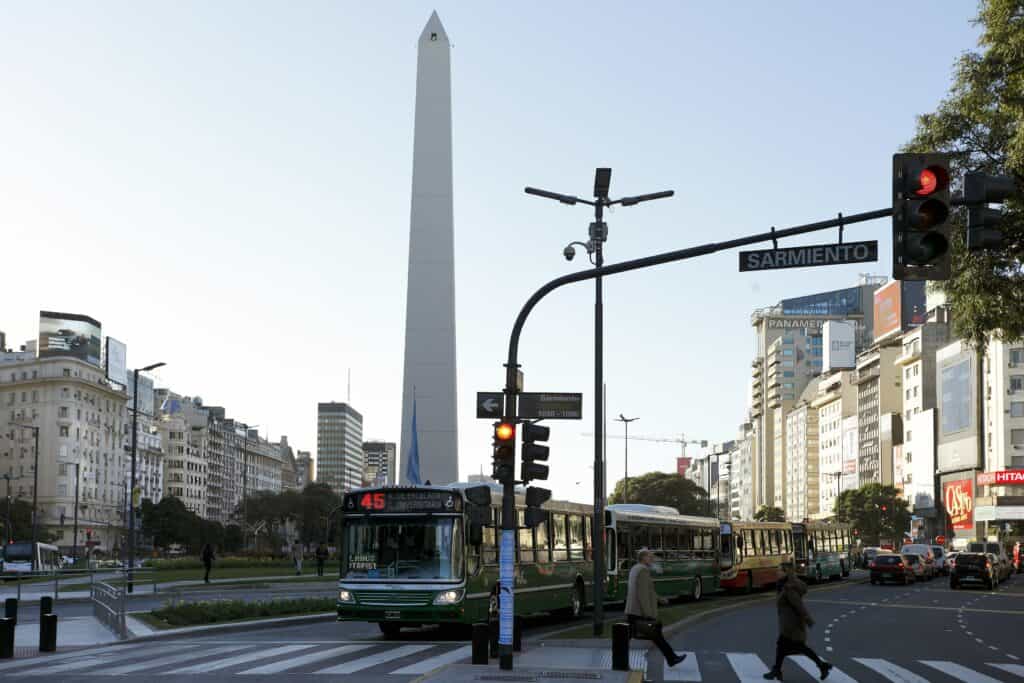
The Buenos Aires symbol that you can find on almost all postcards is the Obelisk on the Plaza de la República in the center of the city, AKA Obelisco de Buenos Aires. Built in 1936, it was built to celebrate the fourth centenary of Buenos Aires at the spot where the Argentine flag symbolizing the country’s independence was raised for the first time in the city.
The Obelisk is located where Avenida Corrientes meets Avenida 9 de Julio; it stands in the barrio of San Nicolas, in the neighborhood where there was once a church dedicated to St. Nicholas of Bari.
Today it is a gathering place for the citizens on different occasions, from concerts to the celebration of the victory of the Argentine national football team. The Obelisco de Buenos Aires is considered a monumental symbol of the city.
The Neighborhood of La Boca
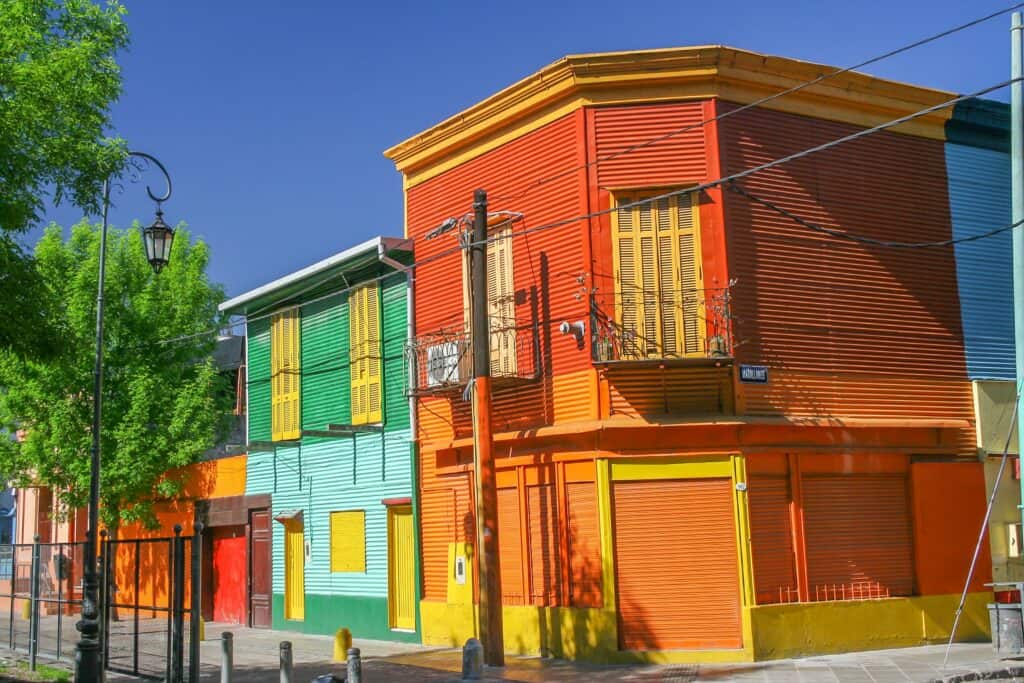
La Boca is the most original neighborhood and a must-visit among Buenos Aires sights. The neighborhood is located in the southeast of the capital, and its name, which translates to “The Mouth,” is derived from its distinct location near the Río de la Plata (the estuary formed by the joining of the Uruguay and Parana rivers).
Originally built by Italian immigrants, La Boca is a picturesque area with dozens of colorful houses, cobbled together from metal sheets of scrapped ships, colorfully painted with marine varnish. La Boca offers many attractions, such as the Boca Juniors Stadium, commonly known as La Bombonera, the Nicolas Avellaneda transport bridge, and a neoclassical church, named after St. John the Evangelist, which was built at the end of the 19th century, among others.
There are also many stores with handicrafts, souvenirs, and restaurants here. However, if you go off the main Caminito street, you should be cautious and take care of your belongings. Also, it’s best to leave the neighborhood before dark.
While in the neighborhood, grab a blue and yellow hat, jersey, or scarf (you can buy them everywhere in La Boca) and visit the venerable Bombonera stadium of Maradona’s team, the legendary Boca Juniors.
On a street art tour, you can admire the colorful works of art and gain an insight into the everyday life of this creative neighborhood. A visit to La Boca is a must!
Visit Caminito and the Colorful Houses
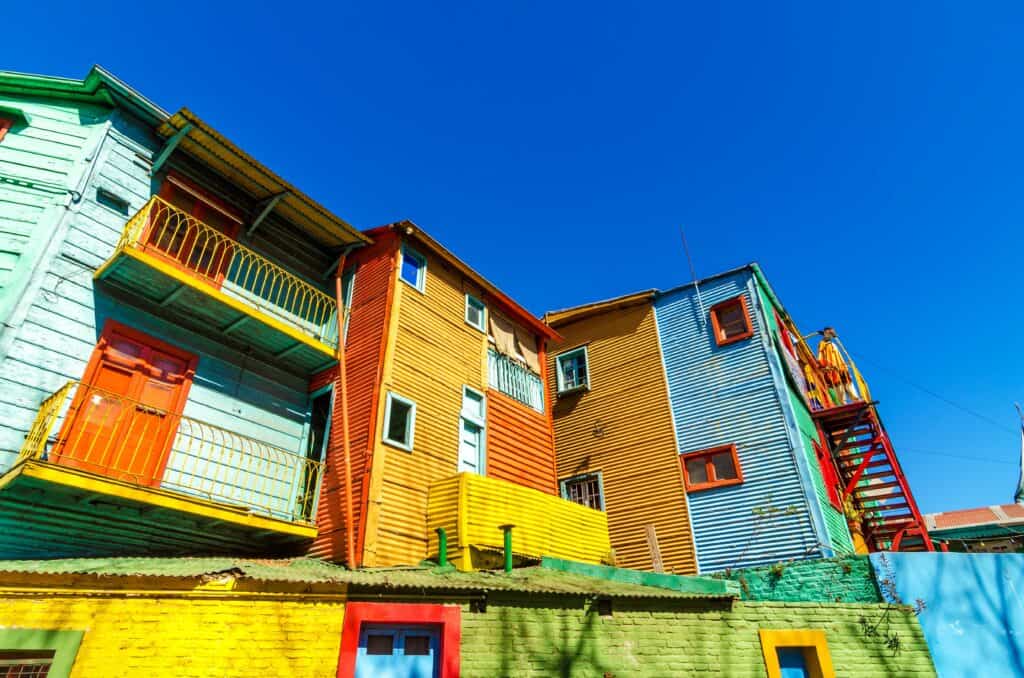
Colors, colors, colors everywhere…..What a unique atmosphere! Welcome to Caminito! A visit to Caminito in Buenos Aires is a must for anyone visiting Argentina. This is the only open-air museum in the whole nation.
Caminito is the work of Benito Quinquela Martin, who was inspired by the social housing of the immigrants in the neighborhood of La Boca. The Caminito is located near the Richuelo River, not far from La Bombonera .
The Buenos Aires Caminito – which means “little road” in Spanish – gives an overview of the life of the 19th and 20th-century immigrants who came to Buenos Aires from all over the world and settled near the port in houses made of wood and tin that were painted with remnants of ship paint.
Today the Caminito is the romance of colorful houses of a bygone era and the stories of people who came to Argentina for a new life and hope. Caminito is full of artists, painters, and musicians, often even some dancers, ready to dance the tango along the road.
La Bombonera Stadium
Once in Buenos Aires, football fans will be swept off their feet when they see the magnificent La Bombonera stadium. Opened in 1940, the stadium was built on the foundations of a wooden building that had previously hosted the Boca Juniors team (until 1938). It has a capacity of 49,000 seats.
Originally named after President Camilo Cichero, it is now called the Estadio Alberto Josè Armando, in honor of another president. The name Bombonera, by the way, comes from the arena’s chocolate box shape.
The Bombonera also houses a Museum, with a kind of Hall of Fame mural dedicated to Diego Armando Maradona and the guitar with which Lenny Kravitz played in his concert in 2005 and which was specially built in the colors of Boca Juniors. Make sure to visit the stadium and soak up the atmosphere and nostalgia of one of South America’s most famous teams.
Spend a Day at La Recoleta Neighborhood & the Cemetery
Dedicate a day to art and explore the La Recoleta neighborhood! Elegance and history merge in this upscale residential neighborhood in the Argentine capital. The name La Recoleta comes from the convent of the Recoletos fathers of the Franciscan order, who settled in Buenos Aires and founded the Church of Our Lady of Pilar and a cemetery that is one of the must-see stops.
One of Buenos Aires’ most famous landmark is the Recoleta Cemetery. It’s an entire city of art and death, filled with statues, crypts, and family shrines. Many famous and influential people of Argentina, such as Eva Perón (Evita) and Napoleon’s granddaughter, found their repose here.
The resting place of the rich and famous Argentines, Recoleta has become for, almost 200 years now, one of the most beautiful and remarkable cemeteries in the world. Here you can see more than 6,400 absolutely incredible family tombs and crypts.
As if in a city within a city, Recoleta Cemetery has Gothic chapels, Greek temples, fairy-tale caves, and graves in small, elaborately decorated houses can be found here. In this cemetery, you can admire statues and chapels decorated by the most talented sculptors in the world. Be sure to spend a few hours walking its streets. Entrance to the cemetery is completely free, but you may need a map.
La Recoleta neighborhood is also the place where you can browse the stalls of a quality handicraft market, located to the right of the beautiful Plaza Alvear, in front of the Pilar Church. Not far from the plaza, you can see the Floralis Generica, a floral sculpture with metallic petals that close at night and open the next day again.
Palermo District
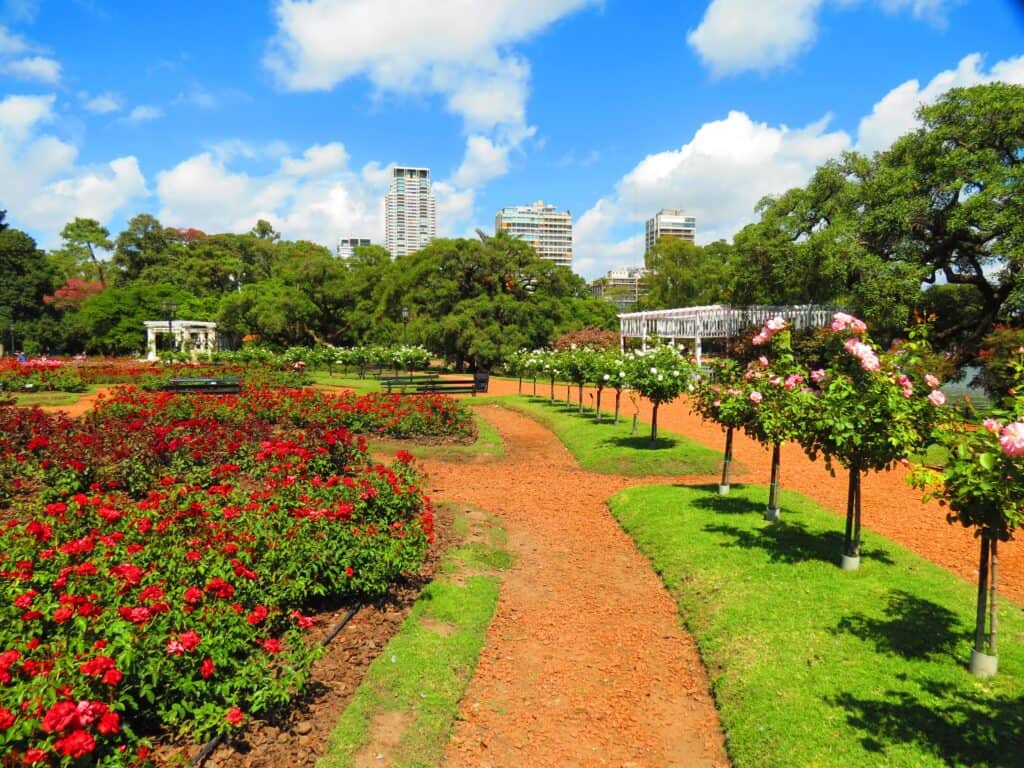
Palermo is the largest and greenest district in Buenos Aires. There are office buildings and residences standing peacefully alongside historic towns, while business districts and hip boutiques blend in with spacious, picturesque parks.
The largest neighborhood in the city owes its name to a convent dedicated to San Benedetto de San Fratello, known as San Benedetto de Palermo. The convent no longer exists, and today you will find a chic residential area dotted with embassies.
The Palermo neighborhood has a Japanese garden and a rose park with a lake and sports tracks. In Palermo, you can see the mansions of the wealthiest and most famous inhabitants of Buenos Aires.
There are also the sub-districts of Palermo, Palermo Soho, and Palermo Hollywood that are full of historical buildings and tree-lined boulevards. You’ll also find the biggest fashion brands, bookstores, and cafes, not to mention the MALBA Museum of Latin American Art and the Evita Museum, which houses Eva Peron’s clothes and shoes.
Take a stroll through the neighborhood’s enormous rose garden, which boasts more than 18,000 species of roses. Here, you can admire the beautiful flowers, get advice on rose care, and even take home cuttings. Also, there is a botanical garden in Palermo, where you can admire the many plants and observe butterflies, and an eco-park with animals.
The Palermo neighborhood will seduce you by day and entertain you by night, with all its restaurants and trendy clubs. The Palermo area is very famous for its nightlife, and if you want some post-sunset entertainment in Buenos Aires, look no further than the great local wine bars and nightclubs. Palermo is truly one of the best sights in Buenos Aires; you can’t miss it!
Shall We Tango?
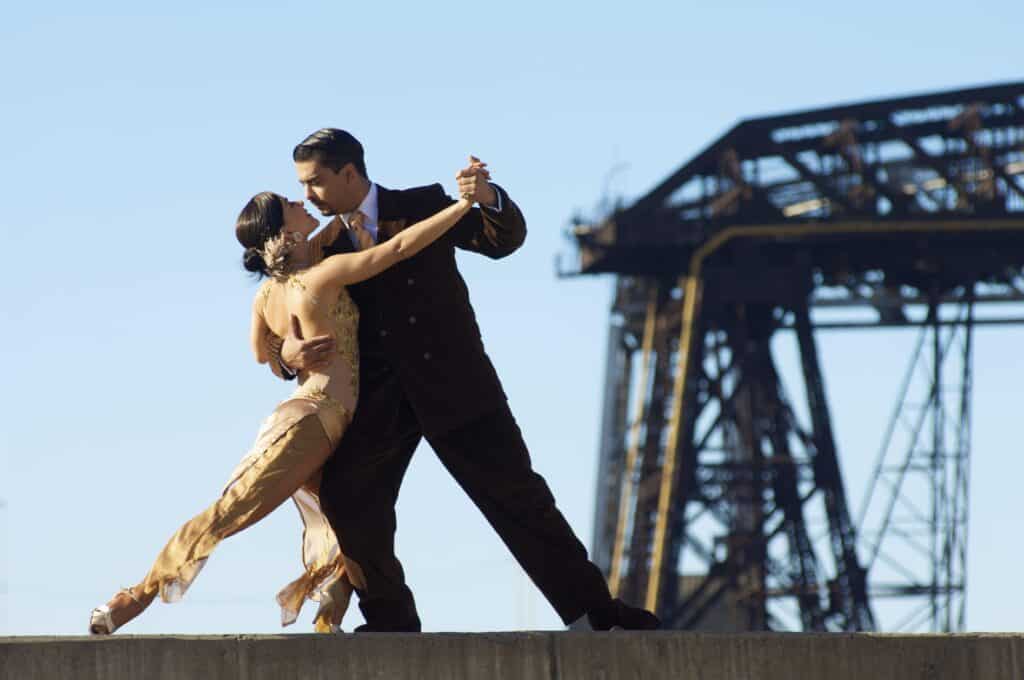
Argentines love their tango, and Buenos Aires is the world capital of tango! In the afternoon, everywhere in the city, young and old couples: men in neat pants and elegant women give themselves to the music. The best part is that you can easily join them! And if you don’t bring a partner, you can hire one of the numerous so-called cab dancers.
Buenos Aires wouldn’t be itself without the tango, which draws its fans and those eager to embrace the art from across the world. Tango in Buenos Aires is danced everywhere; there are tons of tango shows on almost every bar in the city.
There are 15 to 20, sometimes 30 milongas (this is the name of the place where tango dancing and tango parties are held) every day. A place steeped in history, for example, is the Caféteria Ideal. The first floor of the house, inconspicuous from the outside, houses one of the oldest ballrooms in Buenos Aires. The size of the room is impressive: about 1000 square meters with a high vaulted ceiling, marble columns, and rich stucco decorations.
While in the Barancas de Belgrano, at the corner of Sucre and Echeveria, a free open-air tango milonga is held every Saturday and Sunday. If you want to glide over the dance floor in style, it is best to visit one of the countless tango schools or take a private teacher, who is relatively inexpensive. So, just learn the basic movements in advance, and dive into the world of tango!
Buenos Aires is not only a metropolis; it is also the perfect place to discover the scents, flavors, and spirit of the whole of Argentina. Buenos Aires is the place to be; it offers a variety of restaurants and traditional cafés, playful Art Deco architecture and modern design, classy shopping malls and cozy junk stores, musicals and tango concerts, tourists paradises, and traditional originality…..This is a city that has it all!


